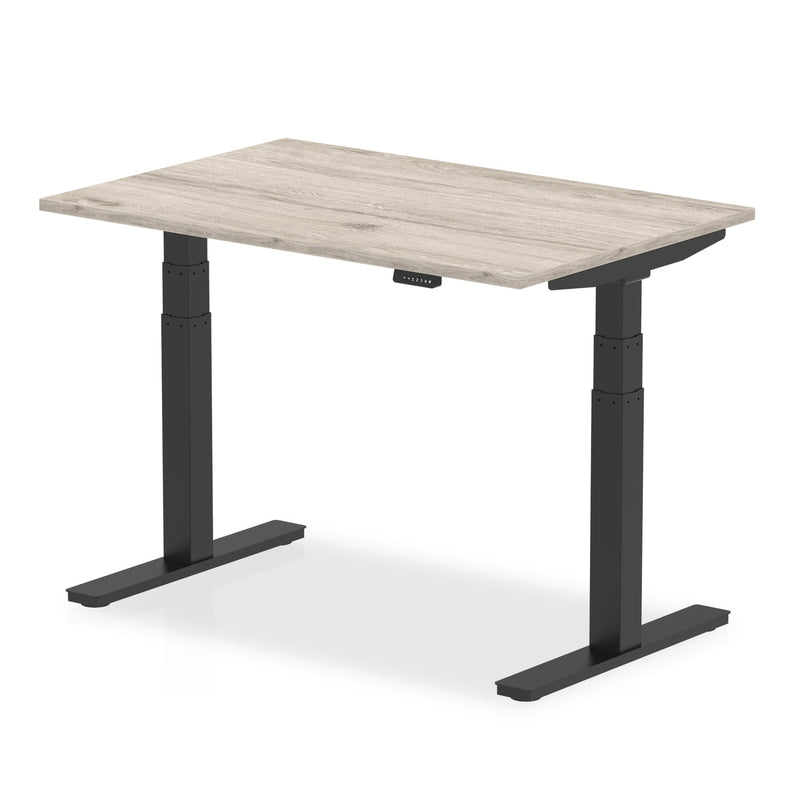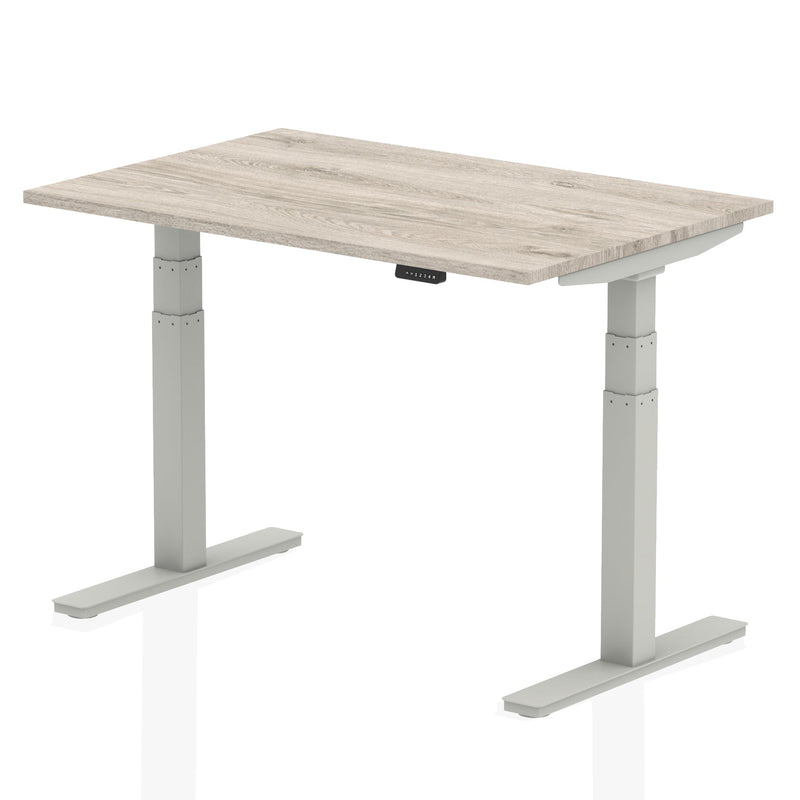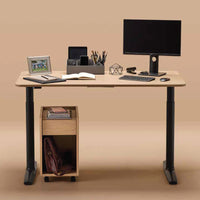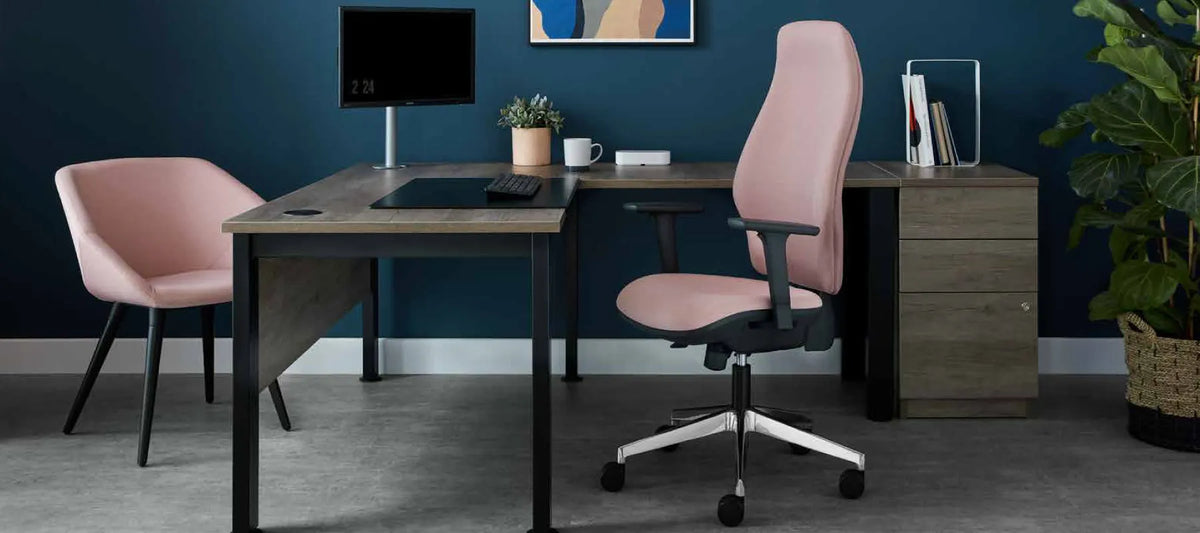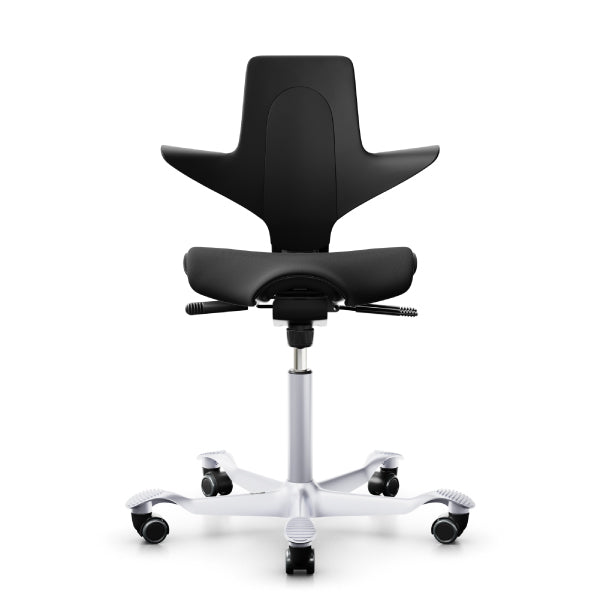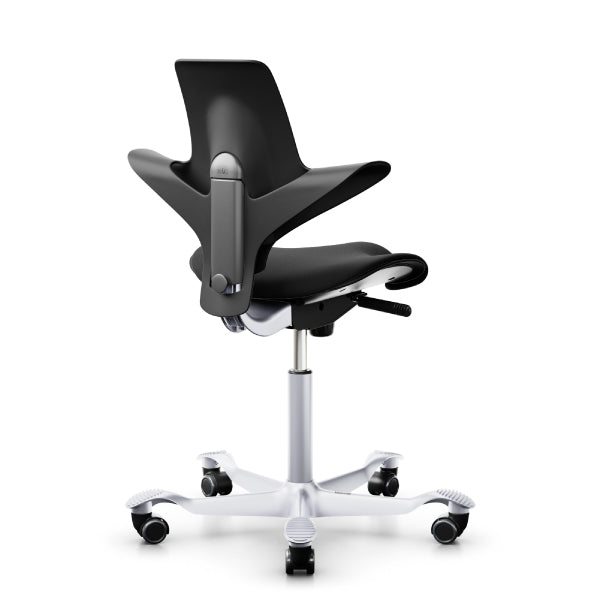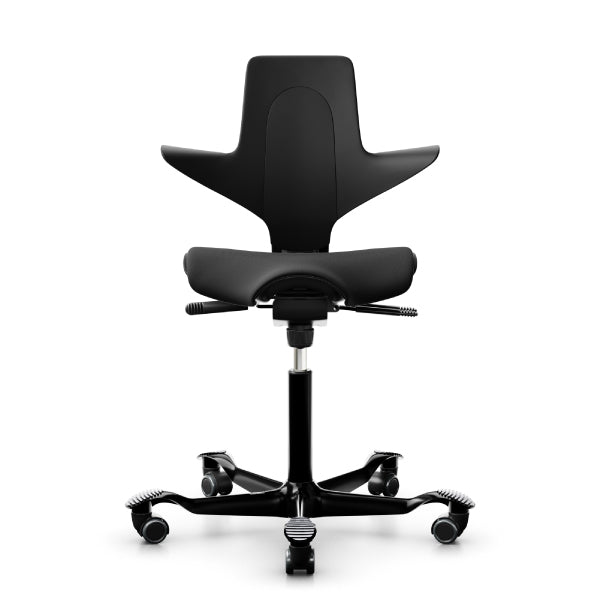Why Choose a Standing Desk?
- Promotes better posture and reduces back and neck pain
- Increases energy levels and improves focus throughout the workday
- Encourages movement and helps burn more calories than sitting
- Adjustable options allow for alternating between sitting and standing positions
- Creates a more dynamic and versatile workspace
Key Benefits at a Glance
| Physical Benefits | Mental Benefits | Workplace Advantages |
|---|---|---|
| Reduced back and neck pain | Enhanced focus and concentration | Increased productivity |
| Better circulation and posture | Improved mood and energy levels | More dynamic collaboration |
| Decreased risk of weight gain | Reduced afternoon fatigue | Lower healthcare costs |
| Lower risk of cardiovascular disease | Greater alertness throughout day | Reduced absenteeism |
Introduction to Standing Desks
Standing desks have changed how we work by giving us a healthier way to do our jobs instead of sitting all day. At Lockwood Hume, we know how important it is to have comfortable workspaces that help you stay healthy and get more done. Our height-adjustable desks let you create a better place to work that helps your health in the long run.
Standing desks (also called sit-stand desks) let you switch between sitting and standing while you work. This simple change can really help your health and how well you work. Scientists have found that sitting too long can lead to problems like obesity, diabetes, and heart disease. That's why many people are now using height-adjustable desks to make their workspaces more active and fight what doctors call "sitting disease."
Our height-adjustable desk collection has many options to fit what you need. Whether you're setting up a home office or furnishing a company workspace, we have desks that work well and look good. These desks are more than just furniture—they're an investment in health, happiness, and productivity that can pay off for both people and companies.
Physical Health Benefits of Standing Desks
Improved Posture and Reduced Pain
One of the biggest benefits of using a standing desk is better posture. When you sit at regular desks, you often slouch, which puts strain on your neck, shoulders, and back. Standing helps your spine stay in a more natural position, taking pressure off these areas and keeping your spine's natural S-curve. Standing also activates core muscles that don't get used when you're sitting, giving better support to your whole skeleton.
Many people notice their back and neck pain gets much better after they start using standing desks. This is especially helpful if you have ongoing pain from sitting for long hours. By changing positions throughout the day, standing desks help prevent the stiffness and pain that comes from staying in one position. Research has shown that people experienced up to 32% less lower back pain after using standing desks for several weeks.
Our Torasen Arise Height Adjustable Desk is built with good posture in mind, giving you a strong platform that adjusts to the perfect height for you. Starting from £396+VAT, this desk is an affordable way to get an ergonomic workspace. The desk is built strong and stays stable even at its highest setting, so you can work confidently while keeping good posture all day.
Increased Movement and Calorie Burn
Standing naturally makes you move more throughout the day. When you stand, you tend to shift your weight, stretch, and move around more than when you're sitting. This extra activity, even though it's small, can help your overall health by improving blood flow, muscle use, and metabolism. These small movements (called non-exercise activity thermogenesis or NEAT) play an important role in keeping your metabolism healthy and preventing the bad effects of sitting too much.
Research shows that standing burns about 50 more calories per hour than sitting. While that might not sound like much, it adds up over time and can be part of a more active lifestyle. For people worried about health problems from sitting all day at work, a standing desk is a simple way to add more movement to your workday. Over a year, these extra calories can add up to the same as running several marathons, potentially helping with weight management without needing to exercise outside of work hours.
Our Air Height Adjustable Desk has smooth, powerful electronic dual motors and 4 programmable memory height settings, making it easy to switch between your favorite positions throughout the day. Priced at £536.83, this desk is an investment in your health and productivity. The memory settings are really useful for making sure you always return to your best height with just one button press instead of having to adjust manually each time.
Better Circulation and Reduced Risk Factors
Standing helps your blood flow better compared to sitting. When you sit for long periods, blood flow to your legs can be restricted, which might lead to swelling, varicose veins, and even serious conditions like deep vein thrombosis in extreme cases. Doctors have noticed that sitting for too long causes blood to pool in the legs, increasing pressure in the veins and possibly causing vein problems over time. Standing helps maintain the natural pumping action that keeps blood flowing well throughout your body.
Changing regularly between sitting and standing helps maintain healthy blood circulation. This improved blood flow not only reduces discomfort but may also contribute to better heart health over time. Research has suggested that breaking up long periods of sitting with standing or light activity can improve various heart and metabolism factors, including blood pressure and blood sugar control, potentially reducing the risk of heart disease and type 2 diabetes that has been linked to too much sitting.
Mental and Cognitive Benefits
Enhanced Focus and Productivity
Many people who use standing desks say they can focus and concentrate better. This might be because standing and moving more increases blood flow and oxygen to the brain. Better circulation can help you stay alert and avoid the afternoon slump that many office workers get. Scientists have observed that physical activity, even just standing, can trigger the release of chemicals in the brain that support brain function, which might explain why many users feel mentally sharper.
Studies show that standing desks can help improve productivity. While it might take time to get used to a standing desk, many people find they can stay focused longer once they adapt to the new setup. Research by Texas A&M University found that employees using stand-capable workstations were 46% more productive than those at traditional desks. This productivity boost was measured over six months, suggesting the benefits last long-term rather than just being a temporary effect.
Improved Mood and Energy Levels
Standing and moving more throughout the day can make you feel happier and more energetic. Physical activity, even the gentle movement that comes with standing, triggers the release of endorphins – hormones that help reduce stress and improve mood. These natural mood boosters can create a more positive work experience and might reduce workplace stress and anxiety. Research has shown that physical activity during the workday can help buffer against job-related stress, potentially improving overall workplace satisfaction and mental health.
Many standing desk users say they feel more energetic throughout the day. By avoiding the sluggishness that can come with sitting for hours, they maintain better energy levels and often feel more positive about their work. This can lead to a more pleasant work environment and better job satisfaction. A study found that people using sit-stand desks reported much less fatigue and more energy compared to those using traditional seated workstations, with these effects becoming stronger over the seven-week study period as users fully adapted to their new work style.
Browse our complete height-adjustable desk collection to find options that fit your specific needs and workspace. Our wide range includes designs for various environments, from compact home office solutions to complete setups for corporate spaces, making sure every user can find the perfect match for their ergonomic needs and style preferences.
Reduced Fatigue and Improved Alertness
Sitting for long periods can make you feel tired, even when doing interesting work. Standing desks help fight this by encouraging regular position changes and promoting better blood flow, which can help keep you alert throughout the day. The physical effort needed to maintain standing posture activates the part of your brain that keeps you awake and attentive. This subtle but continuous activation might help explain why many standing desk users say they feel more alert and less mentally tired.
The change between sitting and standing also helps prevent the mental fatigue that can come from staying in the same position too long. This change of posture can serve as a physical reset, helping to refresh your focus and concentration when your attention starts to fade. Psychologists call this a kind of "microbreak" that can interrupt the pattern of diminishing returns that typically happens with sustained mental effort. By providing these natural breaks in work pattern without actually stopping productive activity, standing desks may help maintain more consistent mental performance throughout the workday.
Explore our ergonomic desk collection to discover solutions specifically designed to promote health and wellness in the workplace. These specialised desks use the latest research in ergonomics and workplace health to create optimal working conditions that support both physical comfort and mental performance throughout the workday.
Optimising Your Standing Desk Setup
Finding the Right Balance: Sitting vs. Standing
The key to getting the most benefit from a standing desk is finding the right balance between sitting and standing. Experts often suggest starting with shorter standing periods and gradually increasing as your body gets used to it. Many people find that switching between sitting and standing throughout the day works best, creating a dynamic work pattern that avoids the problems of staying in any one position too long. Specialists say that neither sitting nor standing for too long is good; instead, our bodies are designed to move and change positions.
A common suggestion is the "30-30 rule" – 30 minutes of sitting followed by 30 minutes of standing. But the ideal mix will be different for each person depending on what they prefer and their physical condition. Some experts suggest starting with just 15-minute standing periods several times a day and slowly working up to longer times as your body adapts. The important thing is to avoid staying in any single position for too long and to listen to what your body tells you. Research suggests the ideal sit-stand ratio may be between 1:1 and 1:3 (sitting:standing), but emphasises that regular position changes are more important than the specific time spent in each position.
To go with your standing desk, consider an ergonomic office chair for times when you need to sit. Our collection includes chairs designed to support good posture and comfort, making sure that your sitting periods are as healthy as possible. A good ergonomic chair works together with your standing desk to create a complete ergonomic workspace that supports your body in all positions.
Proper Ergonomic Setup
For the best results, it's important to set up your standing desk correctly. The desk should be at elbow height, allowing your arms to rest comfortably at a 90-degree angle when typing. This exact positioning helps prevent strain on your shoulders, neck, and wrists that can happen when working at a desk that's not adjusted properly. Your screen should be at eye level to prevent neck strain, which might require a monitor stand or adjustable arm. The top of the screen should be at or slightly below eye level, with the monitor about an arm's length away to reduce eye strain and encourage proper neck positioning.
Pay attention to your posture while standing. Your weight should be evenly spread on both feet, shoulders relaxed, and spine in a neutral position. Avoid leaning on the desk or shifting weight to one side for long periods, as these habits can create new muscle and joint problems. Consider using a small footrest to alternate placing one foot slightly raised, which can help reduce pressure on your lower back. Experts also recommend wearing supportive, comfortable shoes when using a standing desk, as proper foot support contributes significantly to overall posture and comfort during standing periods.
Our HAG Capisco Puls 8020 Black Saddle Chair, priced at £331 + VAT, is specially designed to work with height-adjustable workstations. With its unique saddle seat, it supports many different sitting positions and can be adjusted for both low and high working positions. This innovative design encourages active sitting, allowing for movement and different postures even when seated, making it the perfect partner to a standing desk for a truly dynamic workspace.
Complementary Accessories
To get even more benefits from your standing desk, think about adding complementary accessories. An anti-fatigue mat can provide cushioning and support for your feet, reducing discomfort during long standing periods. These special mats are made with materials that encourage subtle foot movement, which helps with circulation and reduces fatigue. Research has shown that anti-fatigue mats can reduce lower limb and lower back discomfort by up to 50% during prolonged standing, making them a valuable addition to any standing desk setup.
Cable management solutions are also important for keeping a clean, organised workspace. With height-adjustable desks, good cable management ensures that wires move smoothly with the desk and don't create hazards or restrictions. Look for cable trays, spine organisers, or under-desk cable management systems that are specifically designed to work with height-adjustable desks. These solutions not only make your workspace look better but also prevent potential safety hazards and damage to equipment that can happen when cables get tangled or stretched during height adjustments.
Implementing Standing Desks in Different Environments
Home Office Solutions
With more people working remotely, there's growing interest in home office standing desk solutions. When setting up a standing desk at home, think about the available space and how the desk will fit with your existing furniture and décor. Many of our height-adjustable desks come in various sizes and finishes to match different home environments, allowing them to blend seamlessly into your personal space. It's also important to consider noise levels in your home; our electric height-adjustable models have quiet motors that won't disturb family members or interfere with video calls and virtual meetings.
Think about factors like noise (especially important if sharing space with family) and stability (particularly important if you have equipment like multiple monitors). Our Air Height Adjustable Desk has smooth, quiet operation and can support up to 120kg, making it ideal for home office setups. For smaller spaces, look for compact models with efficient footprints that still give you enough work surface. Many home users also like desks with built-in cable management that helps keep a tidy, professional-looking workspace, especially important in multi-purpose rooms where the desk needs to blend well with living space.
For businesses looking to add standing desks throughout their organisation, there are extra things to consider. Training employees on proper use is essential to make sure everyone knows how to adjust their desk correctly and the importance of changing positions throughout the day. This education part is often overlooked but is crucial for getting the most health benefits and ensuring that the investment in standing desks delivers the expected returns for employee wellbeing and productivity. Consider creating simple guidelines or hosting short training sessions to help employees make the most of their new workstations.
A step-by-step implementation can be easier to manage than changing the whole office at once. Consider starting with departments where employees have shown interest or where the type of work makes standing especially beneficial. Our team at Lockwood Hume can help you select the right mix of products for your specific workplace needs. We can help develop strategies that consider both budget limits and ergonomic priorities, ensuring that your transition to standing desks goes smoothly. Many organisations find that starting with a test program allows them to gather feedback and improve their approach before rolling out standing desks more widely.
Collaborative and Meeting Spaces
Standing desks aren't just for individual workstations – they can also be used in collaborative and meeting spaces. Standing meetings tend to be more focused and efficient, as the standing position naturally encourages engagement and discourages the tendency to settle in for long discussions. Research on meeting effectiveness has shown that standing meetings can reduce meeting time by up to 34% while maintaining or even improving the quality of decision-making and participant satisfaction, making them an effective tool for organisations wanting to improve meeting culture.
For collaborative workspaces, consider options like our Air Back-to-Back Slimline Height Adjustable Bench Desk, which fits multiple users while allowing each person to adjust their section to their preferred height. This design supports both collaboration and individual comfort, creating a workspace that adapts to various work styles and physical needs. Height-adjustable conference tables are another great option for meeting rooms, allowing for both traditional seated meetings and more dynamic standing sessions. These versatile pieces can change the way teams interact and collaborate, potentially leading to more creative and productive discussions.
Making the Transition to a Standing Desk
Gradual Adaptation Strategies
When first switching to a standing desk, it's important to start slowly. Begin with short standing periods – maybe 20-30 minutes a few times a day – and gradually increase as your body gets used to it. This approach helps prevent discomfort and fatigue that might happen if you try to stand for too long too quickly. Health specialists recommend this step-by-step approach because it allows your muscles, joints, and heart to adapt gradually to the new demands being placed on them, reducing the risk of discomfort or injury that might otherwise discourage continued use.
Listen to your body's signals. If you feel uncomfortable, take a break and sit down. Over time, most people find they can comfortably stand for longer periods, but there's no need to push through pain or discomfort. Some people find it helpful to keep a simple journal during the first few weeks to track standing times and any feelings they notice, which can help identify patterns and optimise their personal sit-stand routine. Remember that adaptation is a physical process that takes time; studies suggest most users reach their optimal comfort level after about 2-4 weeks of consistent use, so patience during this adjustment period is important for long-term success.
Addressing Common Challenges
Some common challenges when switching to a standing desk include foot discomfort, leg fatigue, and initial productivity adjustments. An anti-fatigue mat can help with foot and leg discomfort, while comfortable, supportive shoes are also important. Experts recommend shoes with good arch support and cushioning similar to what you might wear for extended walking. Some users also benefit from doing simple calf stretches or foot exercises throughout the day to prevent stiffness and improve comfort during standing periods.
Don't worry if you notice a temporary drop in productivity when first using a standing desk. This is normal as your body adjusts to the new working position. Most users find that their productivity returns to normal or improves once they've adapted to the new setup. Scientists suggest that this temporary adjustment period reflects the brain's need to redirect resources that were previously used for maintaining seated posture and are now being used for standing. As your body becomes more efficient at maintaining standing posture, these mental resources become available again for work tasks, often resulting in improved focus and productivity compared to before using a standing desk.
Creating Sustainable Habits
To get the most benefit from your standing desk, focus on creating habits you can maintain long-term rather than forcing yourself to stand all day. Set reminders to change positions if you tend to get absorbed in your work and forget to move. Some height-adjustable desks, like our Air Height Adjustable Desk, come with programmable memory settings that make it easy to switch between your preferred sitting and standing heights. Many people find it helpful to link position changes to specific work transitions or tasks – for example, standing during phone calls or video meetings, and sitting for detailed design work or writing tasks that require intense concentration.
Think about creating a schedule that works for your specific needs. Some people prefer to stand in the morning when energy levels are higher, while others find that standing in the afternoon helps combat after-lunch tiredness. Experiment to find what works best for you. Scientists who study habit formation suggest that linking new behaviours (like standing) to existing routines or specific environmental cues can help establish sustainable patterns. For instance, you might decide to stand whenever you return from lunch or after each hour of work. These consistent "triggers" help make the sit-stand transition a natural part of your workday rather than something you have to consciously remember.
Choosing the Right Standing Desk
Key Features to Consider
When picking a standing desk, there are several important features to think about. First, check the height range to make sure the desk can adjust to both your sitting and standing heights. Our Air Height Adjustable Desk offers a large 660-1310mm height range, fitting users of different heights. Experts recommend that your standing desk should let you position your elbows at about 90 degrees when typing, with the top of your monitor at or slightly below eye level, so having enough adjustment range is essential for proper ergonomic positioning regardless of how tall you are.
Stability is another crucial factor, especially if you'll be using multiple monitors or other heavy equipment. Look for desks with sturdy construction and good weight capacity. The adjustment mechanism is also important - electric height adjustment is generally the most convenient option, allowing for smooth transitions between positions. Our height-adjustable desks have powerful electronic motors for effortless adjustments. Memory settings make it easy to return to your preferred positions with the touch of a button, while sufficient surface area ensures you have enough desktop space for your equipment and work materials. Also consider how noisy the desk is during adjustment, especially in quiet office environments where loud motors might be disruptive.



